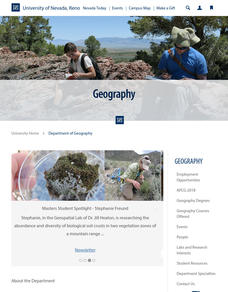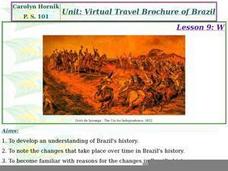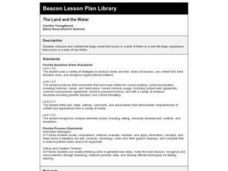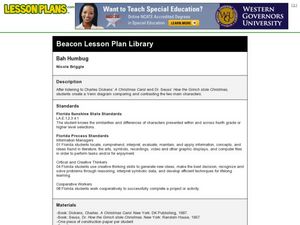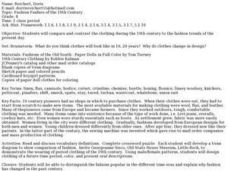Curated OER
Beaver Ecology
Learners explore the lives of bgeahvers. They identify the physical and behavioral adaptations that help beavers survive in their environment. Students compare and contrast how beavers influence the ecology of both forest and aquatic...
Curated OER
Art and Culture
Young scholars compare and contrast the ways in which human figures are portrayed in rock art made by ancient Native American artists and in the drawings and paintings of historic European and American artists. They use images to...
Curated OER
Cinderella Stories - Mufaro's Beautiful Daughters
Students examine an African Cinderella story. In this Cinderella instructional activity, students listen to the story, Mufaro's Beautiful Daughters, in order to compare it to the original Cinderella story and to increase their...
Curated OER
Dreaming of Gardens
Students demonstrate ways to be an environmental philanthropist. In this philanthropy lesson, students read The Gardener and Just a Dream and compare the two books. Students discuss ways the characters demonstrated environmental...
Curated OER
Who Were the Ottomans?
Students explore the Ottoman Empire. In this Ottoman Empire instructional activity, students analyze images of the empire as they take a gallery walk. Students compare and contrast the Ottoman Empire to the other empires in the region of...
Curated OER
Canadian Symbols
Students discover the ideals of Canada by analyzing its symbols. In this Canadian culture lesson, students identify the symbols that established the U.S. as its own nation and compare them to important Canadian symbols. Students visit...
Curated OER
Not the Stereotypical Immigrant?
Students complete a Venn diagram comparing the stereotypes of modern African immigrants to those of other major immigrant groups in the U.S. They write an essay on their observations.
Curated OER
Properties of Waves
Third graders observe and investigate wave properties and compare the properties of particles and waves. They fill a pie pan half full with water, place a toothpick in the center of the pie pan, then drop a marble into the pan and...
Curated OER
Hammurabi's Code of Laws
Learners explore why the need arose for laws to govern society, comparing and contrasting hunter/gatherer societies vs. agrarian societies. They write letters to the editor of the Babylonian Times, discussing their opinion of Hammurabi's...
Curated OER
The Global Grapefruit - Representing a 3-Dimensional Globe on a 2-Dimensional Map
Learners compare and contrast world maps and globes. They convert a 3-dimensional globe to a 2-dimensional map. They are introduced to the Mercator map projection. They observe map distortions of shape, area, distance, directions and angle.
Curated OER
What is Brazil's history?
Students research Brazil's history and note the changes that take place over time in Brazil's history. They analyze reasons for changes in Brazil's history and compare and contrast Brazil's history with that of the United States in...
Curated OER
The Land and the Water
Third graders read "The Land and the Water," a fictional short story and an article about John F. Kennedy, Jr. and compare and contrast fictional tragedy to a non-fiction tragedy. They fill out a Venn diagram and write an essay using...
Curated OER
Bah Humbug
Students listen to two famous stories about people who do not like Christmas, and then create a Venn diagram to compare and contrast the main characters.
Curated OER
Poultry in Motion (The Little Red Hen Meets Chicken Little)
Students read stories and use reading and writing skills to sequence, compare and contrast, predict, and identify parts of a story. Six lessons on one page.
Curated OER
Fashion Fanfare of the 19th Century
Fourth graders compare and contrast the clothing during the 19th century to the fashion trends of the present day. They design something suitable for a future time period and explain why.
Curated OER
Media Stereotypes: How Differences Divide
Students differentiate between generalizations and stereotypes and compare and contrast gender representation. Finally, they critically analyze media for gender stereotypes. They look at magazines and create collages to focus in on the...











